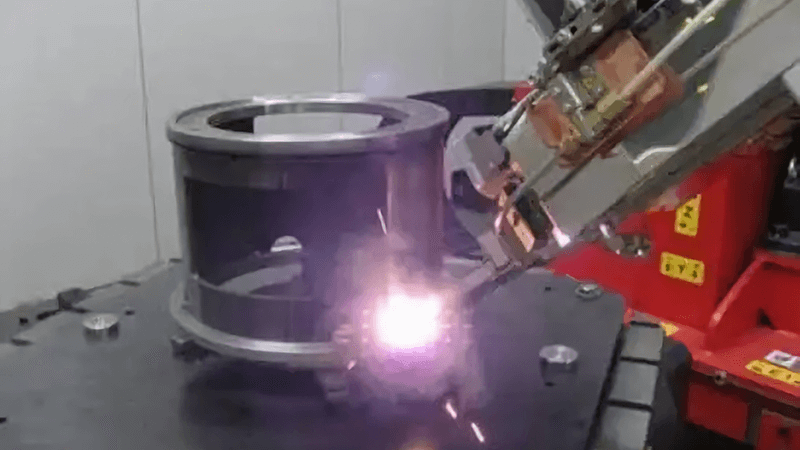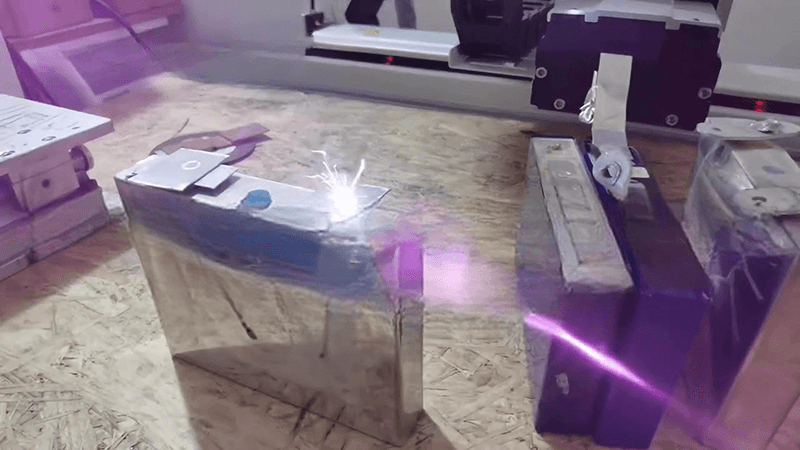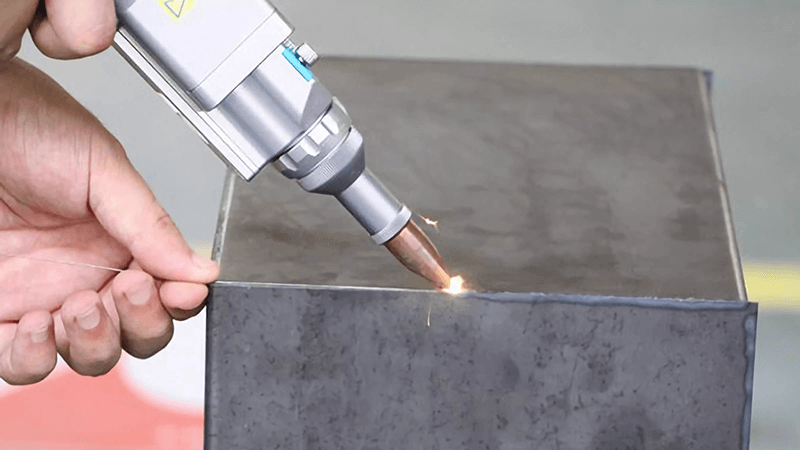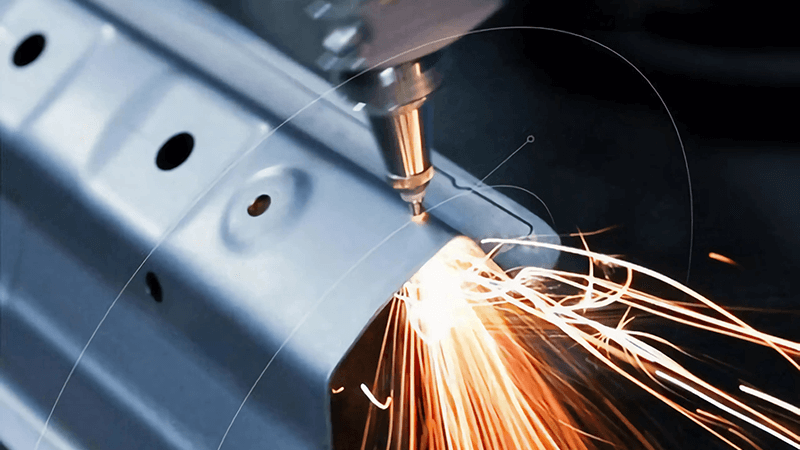In many factories, people struggle with messy weld seams, long production cycles, and constant rework. I have seen it countless times, and the frustration is real. Fiber laser welding is the answer to this problem. It is fast, precise, and reliable.
A fiber laser welding machine works by focusing a high-energy laser beam onto metal surfaces. The beam melts the material at the joint, creating a precise, clean, and strong weld with minimal heat distortion.
When I talk about laser welding, I think about it as drawing with fire. The difference is that it does not burn everything around it. It gives pinpoint accuracy. This is why more industrial partners choose fiber laser welders like ours. Let’s look deeper into some of the most common questions I hear.

How does a laser welding machine work?
Many people are still unsure about how the machine actually works. They think of welding as sparks and smoke everywhere, but fiber laser welding is a very different experience. It is fast and precise, and it saves energy and time for manufacturers.
A laser welding machine works by using a fiber laser to produce a concentrated beam of light. This beam is directed to the surface of the metals being joined. The energy melts the surface instantly, and as the material cools, it forms a clean weld joint with little or no filler material.
Breaking down the process
I’ve seen fiber laser welders deliver crazy-fast, pinpoint accuracy. The laser beam melts the joint in a flash, leaving a tiny heat-affected zone1. That means less distortion and stronger joints.
Here is a simple way to think about the process:
| Step | What happens | Why it matters |
|---|---|---|
| Laser beam generation | Fiber optics amplify light into a powerful beam | High efficiency and stability |
| Beam focusing | Lens directs light into a small, precise spot | Maximum energy density at weld joint |
| Melting metals | The heat melts the surfaces together | Creates strong and clean joints |
| Solidification | The joint cools down quickly | Leaves minimal deformation |
Fiber laser welding is more than just melting metals. It is about control. It gives consistent results even on delicate materials. One client of ours used to struggle with stainless steel parts. They had messy weld seams and lots of rework. After switching to our fiber laser welding2 machine, the seams were smooth, the distortion was almost gone, and production time was cut in half. They no longer worry about inconsistent quality.

Do laser welders need gas?
When people see our machines, they often ask if they need shielding gas. Traditional welding uses lots of gas, so the concern makes sense. The answer is both simple and important.
Yes, most fiber laser welders use shielding gas such as argon, helium, or nitrogen. The gas protects the molten weld pool from oxidation, improves weld quality, and reduces spatter.
Why laser welding gas matters
Gas is not just about protection. It shapes the weld. Shielding gas3 stops oxygen from damaging the weld pool4. It helps the seam stay shiny, clean, and strong. Without gas, the weld would oxidize and weaken.
| Gas Type | Benefit | Typical Use |
|---|---|---|
| Argon | Stable, protects from air | Stainless steel, aluminum |
| Helium | Increases penetration | Thick materials |
| Nitrogen | Reduces cost, prevents oxidation | General use |
I have seen many workshops test welding with and without gas. Without gas, the weld looks rough and porous. With gas, the joint looks smooth and clean. This difference saves hours of grinding and rework. Our machines are designed to optimize gas flow so clients get the best results with minimal waste.

How powerful is a laser welder?
Some people imagine that fiber laser welders are only good for thin sheets. Others think they are too powerful and will burn through everything. The truth is somewhere in the middle.
Fiber laser welders range in power from 500W to over 10kW. Power levels decide how fast and how deep the weld can be. Low power is for thin sheets. High power is for thicker plates and faster production.
Matching power to the job
The key is balance. You do not always need maximum power5. For thin stainless steel, 1000W may be more than enough. For automotive parts, 3000W or more might be required. Higher power increases speed and penetration, but it also requires more control.
| Power Level | Typical Thickness | Best for |
|---|---|---|
| 500W - 1kW | 0.5 - 2 mm | Electronics, small parts |
| 1.5kW - 3kW | 2 - 5 mm | Stainless steel, aluminum |
| 4kW - 10kW | 6 - 20 mm | Heavy industry, automotive |
In my experience, power is not just a number. It is about application. One client asked for a 1500W machine but later realized their jobs needed faster speed. We helped them upgrade to 3000W, and their production line doubled output. Choosing the right power saves time, avoids waste, and keeps the weld consistent6.

How thick can a laser welder weld?
Thickness is one of the most common concerns. Customers want to know if one machine can handle both thin and thick materials. Fiber laser welders are flexible, but there are limits.
A fiber laser welding machine can typically weld materials from 0.5 mm up to 25 mm thick, depending on the laser power and type of material. Thin sheets need low power. Thicker plates need high power and sometimes pre-heating.
Going deep with fiber laser
Thickness depends on both power and joint design7. For example, a 1500W machine can weld 3 mm stainless steel smoothly. But welding a 20 mm steel plate requires a 10kW machine with multiple passes.
| Thickness | Power Needed | Welding Approach |
|---|---|---|
| 0.5 - 2 mm | 500W - 1kW | Continuous seam, fast speed |
| 2 - 5 mm | 1.5kW - 3kW | Single pass, stable quality |
| 6 - 10 mm | 3kW - 6kW | Slower speed, strong penetration |
| 15 - 25 mm | 8kW - 10kW | Multi-pass welding, heavy plates |
I have seen workshops push machines beyond their limits. They try to weld 8 mm steel with a 1kW machine. The result is poor penetration and weak joints. With the right machine, the weld looks clean, strong, and reliable. This is why we always guide clients to match machine power with their material thickness8. It saves them time, cost, and frustration.

Conclusion
Laser welding machines9 work by melting metals with a concentrated fiber laser beam. They use shielding gas to protect the joint, and their power levels decide speed and thickness capacity. At Kirin Laser, I have seen how fiber laser welding changes production. It turns messy seams into clean, strong joints, and it reduces rework and costs. With the right machine, any manufacturer can achieve precision in every beam.
-
Learn about the heat-affected zone to grasp its impact on weld quality and material integrity. ↩
-
Explore the advantages of fiber laser welding to understand its efficiency and precision in metal joining. ↩
-
Understanding shielding gas is crucial for achieving high-quality welds and preventing oxidation, ensuring strong and clean seams. ↩
-
Exploring the weld pool's role can enhance your welding techniques, leading to better results and reduced rework. ↩
-
Understanding the role of maximum power can help you optimize your welding processes for better efficiency. ↩
-
Exploring techniques for consistent welding can enhance your production quality and reduce defects. ↩
-
Understanding the role of power and joint design can enhance your welding efficiency and quality. ↩
-
Understanding the right machine for your material thickness ensures strong, reliable welds, saving time and costs in industrial applications. ↩
-
Finding the best laser welding machine and laser welding solutions from Kirin Laser, clicking this link to get all your needs for your business. ↩





